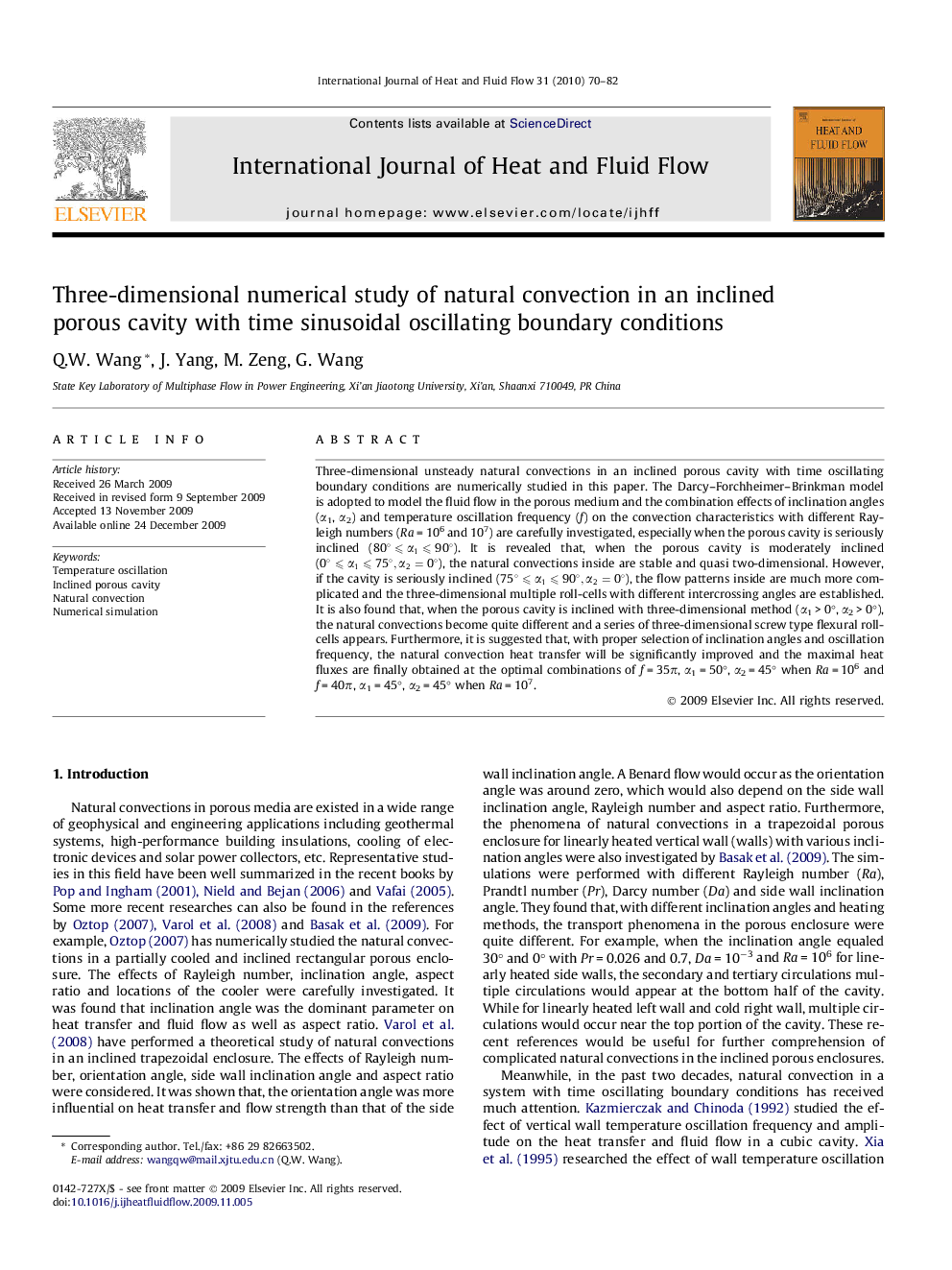| Article ID | Journal | Published Year | Pages | File Type |
|---|---|---|---|---|
| 655865 | International Journal of Heat and Fluid Flow | 2010 | 13 Pages |
Three-dimensional unsteady natural convections in an inclined porous cavity with time oscillating boundary conditions are numerically studied in this paper. The Darcy–Forchheimer–Brinkman model is adopted to model the fluid flow in the porous medium and the combination effects of inclination angles (α1, α2) and temperature oscillation frequency (f) on the convection characteristics with different Rayleigh numbers (Ra = 106 and 107) are carefully investigated, especially when the porous cavity is seriously inclined (80°⩽α1⩽90°80°⩽α1⩽90°). It is revealed that, when the porous cavity is moderately inclined (0°⩽α1⩽75°,α2=0°0°⩽α1⩽75°,α2=0°), the natural convections inside are stable and quasi two-dimensional. However, if the cavity is seriously inclined (75°⩽α1⩽90°,α2=0°75°⩽α1⩽90°,α2=0°), the flow patterns inside are much more complicated and the three-dimensional multiple roll-cells with different intercrossing angles are established. It is also found that, when the porous cavity is inclined with three-dimensional method (α1 > 0°, α2 > 0°), the natural convections become quite different and a series of three-dimensional screw type flexural roll-cells appears. Furthermore, it is suggested that, with proper selection of inclination angles and oscillation frequency, the natural convection heat transfer will be significantly improved and the maximal heat fluxes are finally obtained at the optimal combinations of f = 35π, α1 = 50°, α2 = 45° when Ra = 106 and f = 40π, α1 = 45°, α2 = 45° when Ra = 107.
